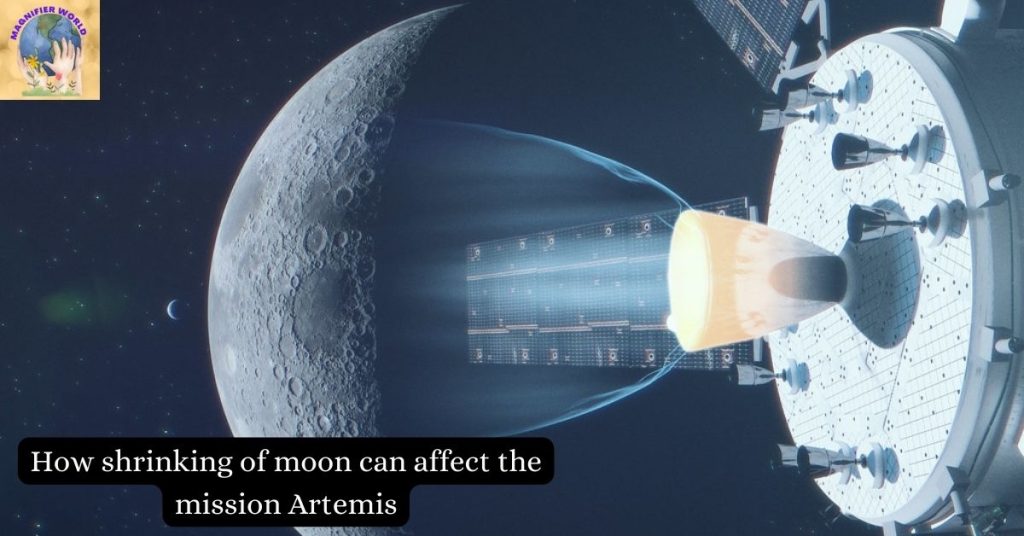Scientists have discovered that while Earth’s Moon gets smaller, there could be landslides and earthquakes at the moon’s South Pole, which could be the Artemis mission’s arrival spot.
Over the last several hundred million decades, the Earth’s moon’s centre has cooled, causing the moon’s circumference to decrease by a factor of over 150 feet. Because of its brittle appearance, the moon can develop faults where crustal parts press against one another, putting astronauts at greater risk.
Researchers found proof that the moon’s ongoing shrinkage caused significant surface deformation in its south polar location, including locations NASA suggested be used for worked Artemis III missions in 2024. And the shrinking of the moon could hamper that.
What is Artemis?
The next stage lunar exploration project is called Artemis by NASA. NASA wants to create a long-term people presence on the lunar surface using the Artemis project as a prelude to Mars operations. The Greek moon deity Artemis, the identical sister of Apollo, represents the inspiration behind the mission’s title. NASA’s next collection of deep space research missions began with the unmanned mission Artemis I.
The following are the primary goals of the Artemis initiatives:
By 2024, they want to land people on the moon, possibly the first woman plus a person of colour. And then explore a greater area of the planet than they have done so previously. The mission will take astronauts to what is known as the South Pole of the Moon. It is a place that nobody has ever visited. Creating a long-term human being on the moon would inspire the development of a completely new lunar economy
Shrinking of Earth Moon
Because the decreasing moon or shrinking of the earth moon causes fault formation, which is frequently associated with seismic activity. That includes moonquakes, areas close to or inside these fault zones may be dangerous for future human research endeavours.
The scientists traced one of the strongest moonquakes ever detected by Apollo seismometers. More than 50 years back to a cluster of cracks in the lunar south polar area. As reported in an article released by known Planetary Science Bulletin.
By utilising models to mimic the long-term viability of the region’s ground slopes. The team discovered that certain locations were especially susceptible to landslides caused by seismic activity.
Shallow moonquakes
Shallow moonquakes take place close to the moon’s exterior, only a few hundred kilometres down into its crust. These like earthquakes, can be powerful enough to destroy machinery, properties, and other constructions. It is made by humans since they originate from internal defects in the lunar surface.
Shallow moonquakes, however, can endure for several hours to an entire afternoon, in contrast to earthquakes. Which typically last for just a couple of minutes or seconds. One such example is the magnitude 5 moonquake that was observed by the Apollo Passive Seismic Network in the 1970s. Which the research team linked to a cluster of faults that the Lunar Reconnaissance Orbiter had discovered in recent years.
As a result of the shrinking of the earth moon, possible human colonies on the moon could be destroyed by shallow moonquakes. ccording to co-author Nicholas Schmerr, a professor of geology.
Scientists are still mapping the moon’s seismic operations to find new areas that might be hazardous for human study. Shrinking of the Earth moon is not good for projects and all.
Read More TECH Blog: Technology

